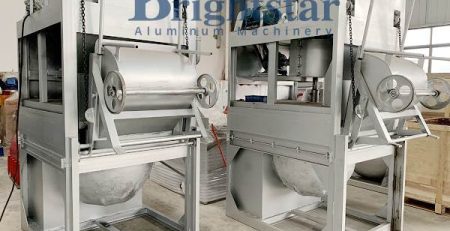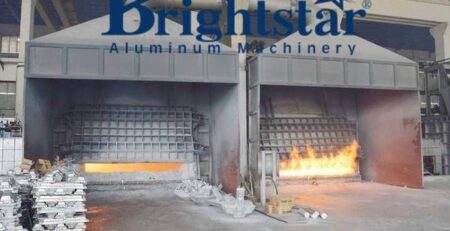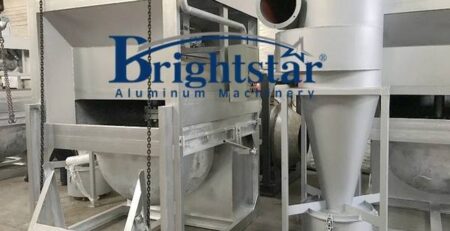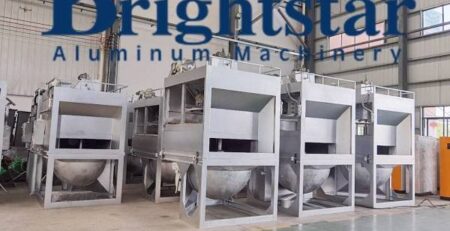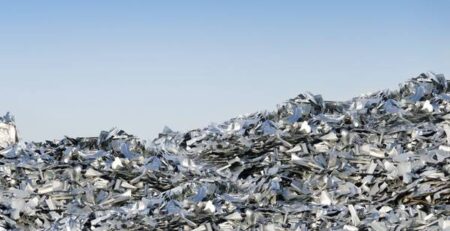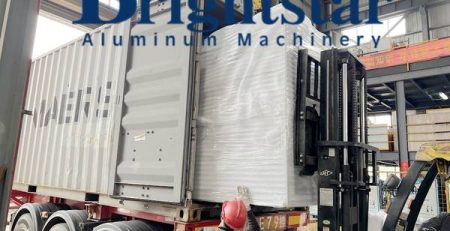Sürdürülebilir alüminyum cüruf çözümlerinde devrim yaratıyor
Sürdürülebilir Alüminyum Cüruf Çözümlerinde Devrim Yaratıyor
Sürdürülebilir alüminyum cüruf çözümlerinde devrim yaratıyor
In the realm of modern metallurgy, Sürdürülebilirlik kavramı basit bir terimden kritik bir zorunluluk haline geldi.
Sektörün karşılaştığı sayısız zorluklar arasında, alüminyum cürufunun işlenmesi ve imhası zorlu bir engel olarak öne çıkıyor.
The need for Sürdürülebilir Alüminyum Cüruf Çözümlerinde Devrim Yaratıyor is not just a matter of environmental concern but also of economic significance.
As industries globally seek ways to minimize their ecological footprint, the aluminum sector must address the pressing issue of dross management with innovative and effective strategies.
The Complex Nature of Aluminum Dross
Alüminyum cüruf, a by-product of the smelting process, contains a mixture of aluminum metal, Filtre torbası toz toplayıcı, and other impurities.
This material, while seemingly innocuous, poses significant challenges due to its reactive nature and potential environmental hazards.
Traditional disposal methods, such as landfilling, have proven to be environmentally detrimental, leading to soil and water contamination.
Hence, the pursuit of sustainable aluminum dross treatment options has gained momentum, as industries aim to mitigate the harmful impacts of their operations.
Harmless Treatment Methods for Aluminum Dross
The quest for harmless treatment methods for aluminum dross has led to the exploration of several innovative techniques.
One such method involves the mechanical separation of aluminum metal from the aluminum dross.
This process not only recovers valuable aluminum but also reduces the volume of waste, making it easier to manage.
Another approach involves the use of chemical agents that can neutralize the hazardous components of dross, rendering it harmless and safe for disposal.
These methods, though still in developmental stages, hold the promise of transforming how the industry handles aluminum dross.
One particularly promising technique is the use of plasma technology, which has shown potential in treating aluminum dross without generating harmful by-products.
Plasma arc treatment involves the application of high temperatures to melt the dross, allowing the aluminum to be separated from the impurities.
The remaining residue can then be treated further to neutralize any remaining harmful substances.
This approach not only ensures the safe disposal of dross but also maximizes the recovery of aluminum, thereby enhancing the overall sustainability of the process.
Secondary Aluminum Dross Recycling Processes
Recycling is at the heart of sustainable industrial practices, bu, birincil veya ikincil eritme işlemlerinden kaynaklanan sıcak cüruf için olduğu anlamına gelir secondary aluminum dross recycling processes are pivotal in this regard.
These processes involve the re-melting of aluminum dross to recover aluminum metal, which can then be reintroduced into the production cycle.
The challenge, ancak, lies in the efficient separation of aluminum from the non-metallic components of the dross.
One innovative method for recycling aluminum dross involves the use of salt flux, which aids in the separation of aluminum from the oxides and other impurities.
This method not only improves the yield of aluminum but also reduces the generation of waste.
bunlara ek olarak, the non-metallic residue, known as salt cake, can be further processed to recover valuable materials such as aluminum nitride, which has applications in various industries.
Another approach to secondary aluminum dross recycling processes is the development of advanced furnaces that are specifically designed to handle dross.
These furnaces are equipped with state-of-the-art control systems that optimize the melting process, ensuring maximum recovery of aluminum with minimal energy consumption.
The introduction of such technologies represents a significant leap forward in the effort to make aluminum production more sustainable.
Equipment for Harmless Aluminum Dross Treatment
The success of harmless treatment methods for aluminum dross largely depends on the availability of specialized equipment that can handle the unique challenges posed by dross.
Equipment for harmless aluminum dross treatment ranges from an alüminyum cüruf bilyalı değirmen, eleme makinesi, bu, birincil veya ikincil eritme işlemlerinden kaynaklanan sıcak cüruf için olduğu anlamına gelir aluminum dross rotary furnace to sophisticated furnaces designed to extract every ounce of aluminum from the waste.
Mechanical separation equipment, such as vibrating screens and magnetic separators, plays a crucial role in the initial stages of dross processing.
These machines are capable of efficiently separating aluminum particles from the non-metallic components of the dross, thereby reducing the volume of waste.
The separated aluminum can then be re-melted and reused, while the remaining residue can be treated further to neutralize any harmful substances.
In addition to mechanical separation, advanced thermal treatment equipment is also essential for harmless treatment methods for aluminum dross.
Induction furnaces, for instance, offer a highly efficient means of melting aluminum dross, allowing for the recovery of aluminum with minimal energy consumption.
These furnaces are equipped with advanced control systems that ensure the precise regulation of temperature and other process parameters, thereby optimizing the recovery of aluminum while minimizing the generation of waste.
Dahası, plasma arc technology, as mentioned earlier, represents a cutting-edge solution for the treatment of aluminum dross.
Plasma arc furnaces are capable of reaching extremely high temperatures, which allows for the complete melting of dross and the recovery of aluminum.
The residue can then be treated to neutralize any remaining harmful substances, ensuring that the entire process is both efficient and environmentally friendly.
How to Treat Secondary Aluminum Dross Safely
Safety is a paramount concern when dealing with aluminum dross, given its reactive nature and potential environmental hazards.
Understanding how to treat secondary aluminum dross safely requires a comprehensive approach that encompasses not only the technical aspects of dross treatment but also the implementation of stringent safety protocols.
One of the primary challenges in treating aluminum dross is the potential for the release of harmful gases, such as hydrogen and ammonia, during the processing of the material.
To address this issue, it is essential to employ equipment that is designed to operate under controlled conditions, minimizing the risk of gas emissions.
For instance, the use of sealed induction furnaces can help to contain and manage the release of gases, ensuring that the treatment process is carried out safely.
In addition to equipment considerations, the safe handling of aluminum dross also requires the implementation of rigorous safety protocols.
This includes the use of personal protective equipment (PPE) for workers, as well as the establishment of proper ventilation systems to prevent the buildup of harmful gases in the work environment.
Furthermore, regular monitoring and maintenance of equipment are essential to ensure that the treatment process remains safe and effective.
Training is another critical aspect of ensuring the safe treatment of aluminum dross.
Workers involved in the handling and processing of dross must be adequately trained in the use of the equipment and the implementation of safety protocols.
This includes understanding the potential hazards associated with aluminum dross, as well as the measures that need to be taken to mitigate these risks.
The Environmental and Economic Implications of Sustainable Aluminum Dross Solutions
The shift towards sustainable aluminum dross treatment options is driven not only by environmental concerns but also by economic considerations.
As industries increasingly recognize the financial benefits of sustainable practices, the development and implementation of innovative dross treatment methods have become a priority.
From an environmental perspective, the adoption of sustainable aluminum dross treatment options offers a means of reducing the ecological footprint of aluminum production.
By minimizing the generation of waste and maximizing the recovery of aluminum, these methods help to conserve natural resources and reduce the impact of industrial activities on the environment.
Dahası, the implementation of harmless treatment methods ensures that the disposal of dross does not result in soil or water contamination, further contributing to the sustainability of the process.
Economically, the recovery of aluminum from dross represents a significant cost-saving opportunity for industries.
By re-melting aluminum dross and reintroducing the recovered metal into the production cycle, companies can reduce their reliance on primary aluminum, which is both energy-intensive and expensive to produce.
bunlara ek olarak, the development of advanced dross treatment technologies can create new revenue streams, as the non-metallic residue can be processed to recover valuable materials for use in other industries.
Furthermore, the adoption of sustainable aluminum dross treatment options can enhance a company’s reputation and competitiveness in the market.
As consumers and stakeholders increasingly prioritize sustainability, companies that demonstrate a commitment to environmentally responsible practices are likely to enjoy a competitive advantage.
Bu, sırayla, can lead to increased customer loyalty, improved brand image, and greater market share.
The Road Ahead: Innovations and Challenges
The journey towards Sürdürülebilir Alüminyum Cüruf Çözümlerinde Devrim Yaratıyor is far from over.
While significant progress has been made in the development of innovative dross treatment methods, there are still numerous challenges that need to be addressed.
One of the key challenges is the need for further research and development to improve the efficiency and effectiveness of existing dross treatment technologies.
This includes the refinement of mechanical separation methods, the optimization of thermal treatment processes, and the exploration of new chemical treatment options.
bunlara ek olarak, there is a need for the development of new materials and technologies that can enhance the safety and sustainability of dross treatment processes.
Another challenge lies in the scalability of these technologies. While many of the current methods for treating aluminum dross have shown promise in laboratory settings, their implementation on an industrial scale presents a range of technical and logistical challenges.
This includes the need for significant capital investment, as well as the development of infrastructure to support the widespread adoption of these technologies.
Dahası, the regulatory landscape for aluminum dross treatment is constantly evolving, with stricter environmental regulations being introduced in many parts of the world.
Companies must therefore stay abreast of these changes and ensure that their dross treatment processes comply with the latest regulatory requirements.
This may involve the need for additional investment in compliance measures, as well as the adaptation of existing processes to meet new standards.
Despite these challenges, the future of sustainable aluminum dross treatment options looks promising.
As industries continue to prioritize sustainability, there is likely to be increased investment in the development and implementation of innovative dross treatment technologies.
Bu, sırayla, will drive further advancements in the field, leading to the creation of more efficient, etkili, and environmentally friendly solutions.
Çözüm
The challenge of managing aluminum dross is a complex one, but it is also an opportunity to drive innovation and sustainability in the aluminum industry.
By embracing Sürdürülebilir Alüminyum Cüruf Çözümlerinde Devrim Yaratıyor, industries can not only reduce their environmental impact but also enhance their economic performance.
The development of harmless treatment methods for aluminum dross, secondary aluminum dross recycling processes, and specialized equipment for harmless aluminum dross treatment are all critical components of this effort.
As we move forward, the continued pursuit of sustainable aluminum dross treatment options will be essential in ensuring a more sustainable and prosperous future for the aluminum industry.




